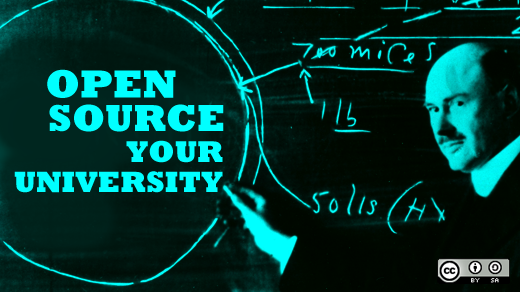Raising open source awareness in any organization is a very important, and sometimes difficult, task. Particularly important is open source awareness among college students. These are the engineers and computer scientists of the next generation who will be able to usher these modern practices into their workplace. This article discusses the process that was used to form the Rensselaer Center for Open Source (RCOS), a very successful open source center at Rensselaer Polytechnic Institute (RPI).
The goal of an open source center is to engage students eager to change the world by developing innovations that could lead to next-generation open source platforms. The center should provide a creative, intellectual and entrepreneurial outlet for students to use the latest open source software platforms to develop applications that solve societal problems. Moreover, the center helps to provide a rich undergraduate experience by offering hands-on experience that positions students as tomorrow’s global citizens and leaders.
We have distilled our experience to a list of items that are necessary (but not necessarily sufficient) for the success of such a center:
1) Gather 20-40 eager undergraduate and graduate students committed to practicing and progressing open source software and ideology. This can be done using the normal student club channels, including advertising in the campus newspaper and listing the organization in any available student activities lists.
2) While a student club is better than nothing, they are often not officially recognized by universities. To make the open source center more official, gather a small team (around 3) of dedicated faculty members. They will share the burden of not only keeping the center on track and organized, but will also serve as liaisons to the university. The lead faculty advisor of RCOS reports to the Dean of Undergraduate Education to keep him informed of the activities of the center. With help from the students, the advisors maintain the center website, review project proposals, and facilitate student peer group meetings and discussions. As another example, by cooperating with the Web Technology Group student club, a free and open source digital signage project, Concerto, was born and became widely used at RPI and elsewhere.
3) Write reasonable proposals to funding agencies, alumni, and companies who may be interested in open source. This funding can support some student projects, as well as purchase any necessary
equipment.
4) Get the center’s faculty advisors or local corporate scientists to teach a course each year on open software practices. The course at RPI was featured here. This course should cover more formal aspects of open source, including licensing, meritocracy economics, and other software practices. This course not only provides a formal introduction to open source, but also provides another source of students for the open source center.
5) Interact with the local state and city government and involve students in projects to help the community. This will provide a good source of projects for students as well as good publicity for the center. For example, an RCOS student worked with a local fire department to create a fire department management system to allow them to digitally maintain records they had been maintaining on paper. This in turn allowed the department to focus more on their true responsibilities rather than filling out paper work.
6) Maintain a dashboard of student projects. This allows an outside observer to quickly see the types of projects the group is working on, and the quality of the work they are capable of.
7) Gain support from the university administration, including the registrar, the library, the computing center, and academic departments. This mutually beneficial relationship is exemplified in the cooperation that was necessary to complete the Course Scheduler project. This project pulls the latest course offerings from the university and allows students to create their ideal course schedules within the constraints of the course offering schedule.
8) Students learn most from their peers. To encourage this, we provide a virtual community space (a chat room) where students can ask for help, share their expertise, and bounce ideas off of each other. The immediate responses in this type of setting are always very well-received.
9) Provide opportunities for the students to listen to external speakers. By providing greater exposure, students will begin to network, leading to internships as well as other exciting opportunities like Google Summer of Code.
10 ) Select a small group of senior students to be peer mentors who will provide guidance and feedback to other students. These peer mentors will also come up with new project ideas and provide valuable support to the faculty advisers.
11) Provide some sort of refreshment (pizza, cookies, etc.) during meetings. Like it or not, food attracts students! While we would hope the students would be motivated on their own, if it takes a little bit
of encouragement to get them into the room, that's OK. Once they are there, the conversation and ideas will start to flow.
We hope that the above items provide a good starting point for other universities to start a similar center to RCOS. We are happy to further share our experience by answering any questions you may have. Just email rpiopensource@gmail.com, and good luck with your new open source center.







4 Comments